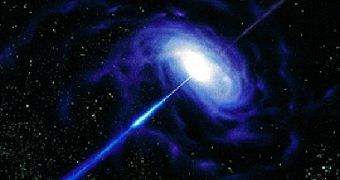A team of investigators from the United States have recently uncovered evidence that would seem to indicate the existence of universal magnetic field in the early Universe, that fill the void between galaxies.
The experts say that these fields have been left behind since the time of the Big Bang. They add that the formations are ubiquitous, in the sense that they can be found in the entire Cosmos.
The investigation was led by researchers at the California Institute of Technology (Caltech), who collaborated with colleagues from the University of California in Los Angeles (UCLA).
“We found the signs of primordial magnetic fields in deep space between galaxies,” reveals Shin'ichiro Ando, who is a physicist at Caltech.
He was one of the leaders for the new research, alongside colleague Alexander Kusenko, who is an UCLA professor of physics and astronomy.
The two have already authored a new research paper detailing the findings, which is currently scheduled to appear in an upcoming issue of the esteemed publication Astrophysical Journal Letters.
For the new investigation, the team used the NASA Fermi Gamma-ray Space Telescope to look straight at supermassive black holes.
These are balls of tremendously-compressed matter, that emit high-energy radiation through their poles. The dark behemoths can also break apart and consume stars in violent cosmic events.
“Because space is filled with background radiation left over from the Big Bang, as well as emitted from galaxies, high-energy photons emitted by a distant source can interact with the background photons and convert into electron-positron pairs, which interact in their turn and convert back into a group of photons somewhat later,” Kusenko explains.
He is also a senior scientist in the Institute for Physics and Mathematics of the Universe, at the University of Tokyo, in Japan.
More than 170 images of supermassive black holes were produced, and the experts were surprised to learn that none of them was as sharp as they expected.
The team says this is evidence of the presence of magnetic fields. “While this process by itself does not blur the image significantly, even a small magnetic field along the way can deflect the electrons and positrons, making the image fuzzy,” explains Kusenko.
He goes on to say that the work was funded by NASA, the US Department of Energy (DOE) and Japan's Society for the Promotion of Science.

 14 DAY TRIAL //
14 DAY TRIAL //